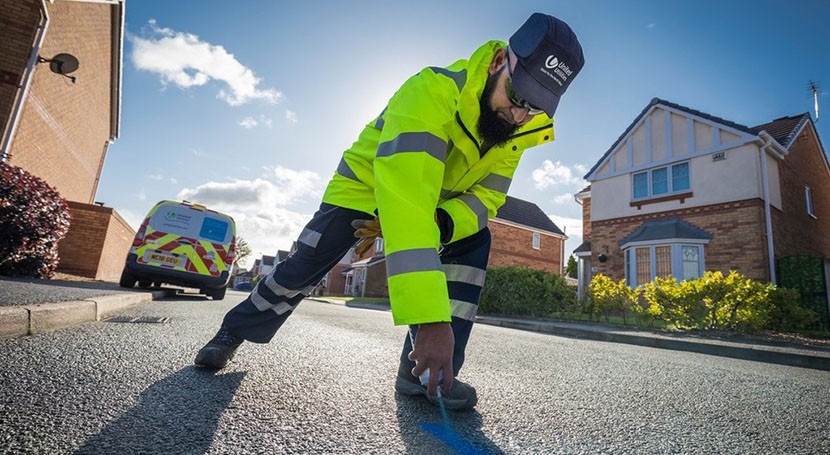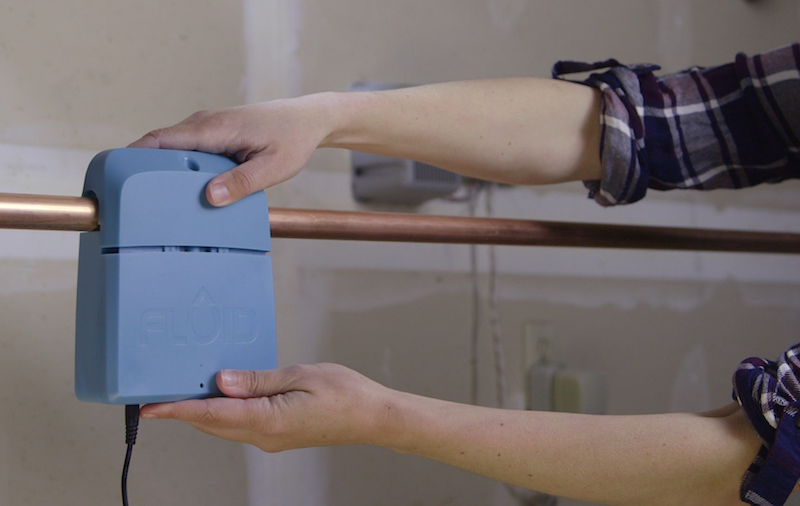Discover Reliable Water Leak Detection Providers for Accurate and Quick Results
Wiki Article
Innovative Solutions for Very Early Discovery of Water Leakages in Structures and Framework
As the integrity of buildings and infrastructure is vital, the challenge of very early discovery of water leaks has spurred ingenious solutions that promise to revolutionize the way we secure versus prospective problems. From advanced leakage discovery innovations to the deployment of IoT sensing units for real-time monitoring, the landscape of leak prevention is advancing quickly. Artificial intelligence algorithms offer a peek into the future of leak prediction, while thermal imaging provides a non-intrusive technique for pinpointing covert leakages. Automated water flow evaluation systems are improving how leaks are determined and dealt with, leading the way for a positive technique to water leakage detection. Each of these solutions holds the key to ensuring the dependability and long life of our constructed environment, triggering a shift in the direction of a much more lasting and effective future.Advanced Leakage Discovery Technologies
Advanced leak detection technologies, outfitted with innovative sensing units and algorithms, play an important function in swiftly identifying and determining water leakages in numerous settings. These modern technologies utilize a combination of acoustic, thermal, and electro-magnetic noticing methods to spot leakages properly. Acoustic sensors discover the audio of escaping water, permitting specific localization of the leak source. Thermal imaging spots temperature level changes triggered by water leak, offering an additional effective technique for leak recognition. Electro-magnetic sensors can identify changes in magnetic fields caused by water, offering yet an additional layer of leakage discovery ability.
IoT Sensors for Real-Time Surveillance
In the world of contemporary water leakage detection, the assimilation of IoT sensing units for real-time tracking stands for a critical improvement in enhancing aggressive leakage discovery abilities. These sensing units provide continuous surveillance of water supply, providing real-time data on water flow rates, pressure variations, and temperature level modifications. By leveraging IoT innovation, these sensors can identify even the smallest abnormalities in water usage patterns, allowing very early identification of prospective leaks prior to they rise right into significant problems.IoT sensing units transmit information to a centralized system, where sophisticated algorithms examine the info and create informs or notices when irregularities are detected. This real-time monitoring capability permits homeowner or center supervisors to immediately attend to leakages, reducing water damages, lowering fixing prices, and conserving water resources.
Furthermore, IoT sensing units can be integrated with structure administration systems, permitting for computerized actions to detected leakages, such as shutting down water valves or turning on pumps to minimize the effect of leakages. Generally, the execution of IoT sensors for real-time tracking considerably improves the effectiveness and effectiveness of water leak discovery in structures and facilities.
Equipment Understanding Algorithms for Leakage Forecast

One secret advantage of utilizing maker discovering for leak prediction is its ability to constantly find out and improve its precision over time. As more information is accumulated and fed right into the formula, it can refine its predictions and adapt to transforming conditions, inevitably increasing the reliability of leakage discovery systems.
Furthermore, artificial intelligence formulas can aid in identifying refined indicators of leakages that may go unnoticed by traditional monitoring methods. water leak detection. By evaluating intricate information embed in real-time, these algorithms can provide early warnings and alerts, enabling timely intervention and preventive maintenance to mitigate possible water damage and connected costs
Utilizing Thermal Imaging for Leakage Discovery
Thermal imaging technology offers an appealing approach for discovering water leakages in different systems and facilities. By using infrared radiation and temperature variations, thermal imaging cameras can recognize covert leaks that are not easily visible to the nude eye. When water leaves from pipelines or structures, it usually changes the temperature of my latest blog post the bordering area, developing temperature level differentials that thermal cams can record. These temperature level abnormalities are then equated into visible images, highlighting the precise place of the leakage.One of the key advantages of thermal imaging for leak detection is its non-intrusive nature. Generally, the usage of thermal imaging technology enhances the performance and precision of water leak detection, making it a useful tool for keeping the integrity of structures and frameworks.
Automated Water Flow Evaluation Systems
How can automatic water circulation evaluation systems revolutionize the detection and monitoring of leaks in different systems and infrastructures? Automated water circulation evaluation systems supply a proactive technique to redirected here leak detection by constantly checking water circulation rates and patterns. By developing standard information, these systems can quickly recognize deviations that might suggest a leak, enabling prompt treatment to stop substantial damages.These systems use innovative algorithms to examine real-time data and offer immediate informs when abnormalities are spotted, enabling swift activity to be taken. Furthermore, computerized water circulation evaluation systems can be integrated with structure management systems or IoT systems, boosting overall efficiency and making it possible for remote tracking capacities.
Additionally, the information gathered by these systems can be made use of for anticipating upkeep objectives, aiding to identify prospective powerlessness in the framework before leaks take place. In general, the implementation of automatic water circulation evaluation systems can considerably enhance leak detection and management techniques, inevitably bring about cost savings, reduced water wastage, and boosted sustainability in buildings and framework.

Conclusion
To conclude, the combination of innovative leakage detection technologies, IoT sensing units, maker knowing formulas, thermal imaging, and automated water flow evaluation systems offers ingenious solutions for early discovery of water leaks in buildings and infrastructure. These modern technologies enable real-time surveillance, prediction of leakages, and reliable discovery approaches to avoid water damage and wastefulness. Applying these solutions can assist in maintaining the integrity and sustainability of water supply see this here in numerous setups.Report this wiki page